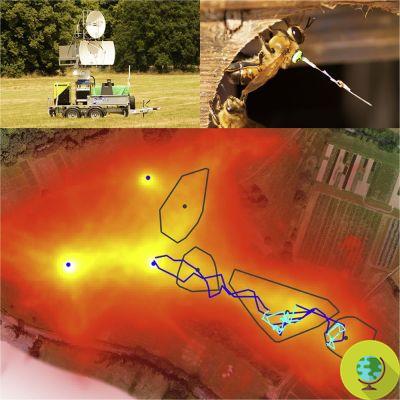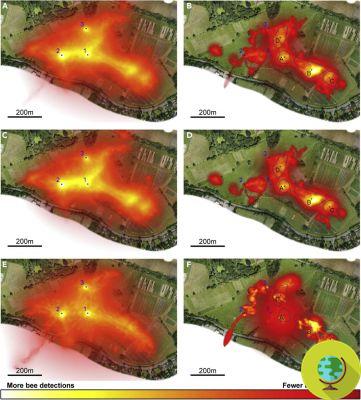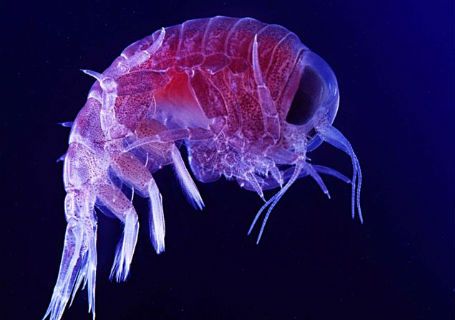Today a research led by Queen Mary University of London (UK) has discovered where bees make their nuptial flights
He is about to end up run over, his mother saves himMale bees, the so-called drones, have one purpose in life: to mate with a virgin queen. But so far the favorite places of love encounters have always been a mystery. Today a research led by Queen Mary University of London (UK) has discovered where these wonderful insects meet.
Young queens make up to six nuptial flights early in their life, during which they mate with several drones (generally 6 to 24). The females then store the sperm, which they use to fertilize all the eggs they lay for the rest of their life, more than 1.000 per day.
The drones, for their part, leave the hive several times a day in search of coupling, from the first days of adult life to death, which occurs after about three weeks.
But where do the drones go?

©Cell Press
For about 200 years, scientists have been trying to solve the mystery of wedding flights, using pheromone baits produced by queens up to radar to track the movements of male bees. But without certainty of the results.
In this new study, for two years, the researchers monitored the movements of some drones after attaching transponders to their thorax, technically devices that receive, amplify and retransmit a signal on a different frequency, in fact, in this case, radar. miniaturized and built ad hoc to rotate once every three seconds, "illuminating" the surrounding environment and thus allowing to reconstruct the position of the insects.
The results of this monitoring showed that the drones can fly in two different ways, direct but also circular and ring flights, and that the latter were grouped in four specific areas.
Scholars have also found that male bees, even without baits, tended to cluster around certain areas, called 'congregation areas', and they tended to accelerate their flight as they approached the center of these.
This behavior has been interpreted in relation to the places most likely frequented by females: in other words, as soon as a male arrives near these areas, he begins to "go around" them until he points decisively at the exact area. Since this behavior is used by several males at the same time, a grouping (congregation) of drones is observed in search of queens with which to mate.
Read also: Wonderful bees: new research reveals details on the evolution of their social life
A quest that drones learn in their lifetime

©Cell Press
Of course it is not a quest that the drones manage to do early in their adult life. The monitoring has in fact shown that their first flights are near the hive and that only at a later stage are they longer and actually point to the congregation areas.
Whatever signal they use to guide themselves must be already evident near the hives - the researchers write in The Conversation - and, since drones from different hives have visited the same locations, it must be observable regardless of where they are.
Experts now plan to use a 3D model of the entire site in the field to reconstruct what the monitored drones can see as they fly to congregation areas, with the goal of finding out what drives them to the correct areas.
Understanding the behavior of drones in matings will help beekeepers manage their breeding programs and will help us uncover a ancient mystery about the behavior of bees, the researchers conclude.
The work was published in Cell Press.
Sources of reference: The Conversation / Cell Press
Read also:
- How to make a drinking trough to quench the bees' thirst using marbles
- Solitary bees, let us house them in our gardens and balconies: they do not produce honey, but they are essential


























